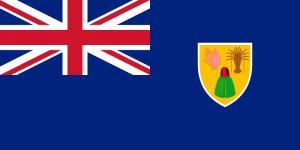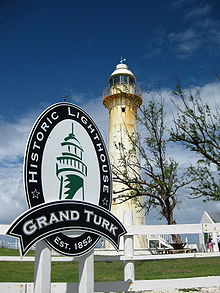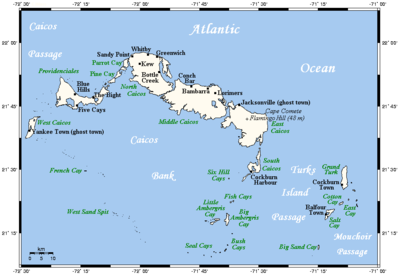Turks and Caicos Islands

Turks and Caicos
On this documentary you will see Turks and Caicos´ unique blend of history, colourful local tradition, peace, glamour, unspoilt nature, pristine beaches, turquoise waters and a famous deep sea fishing destination. By accompanying us on our trip through the different islands of this Caribbean archipelago you will discover a perfectly preserved paradise. Understand why Hollywood stars have sought refuge here to getaway from prying paparazzi.
The Turks and Caicos Islands (/ˈtɜrks/ and /ˈkeɪkəs/ / /ˈkeɪkoʊs/ / /ˈkeɪkɒs/ TCI); are a British Overseas Territory consisting of the larger Caicos Islands and smaller Turks Islands, two groups of tropical islands in the Lucayan Archipelago, part of the larger Antilles island grouping. They are known primarily for tourism and as an offshore financial centre. The total population is about 31,500, of whom approximately 27,000 live on Providenciales in the Caicos Islands.
The Turks and Caicos Islands lie southeast of Mayaguana in the Bahamas island chain and north of the island of Hispaniola. Cockburn Town, the capital since 1766, is situated on Grand Turk Island about 1,042 kilometres (647 mi) east-southeast of Miami, United States. The islands have a total land area of 430 square kilometres (170 sq mi). They are geographically contiguous with the Bahamas, but are politically separate.
The first recorded sighting of the islands now known as the Turks and Caicos occurred in 1512. In the subsequent centuries, the islands were claimed by several European powers with the British Empire eventually gaining control. For many years the islands were governed indirectly through Bermuda, the Bahamas, and Jamaica. When the Bahamas gained independence in 1973, the islands received their own governor and have remained a separate autonomous British Overseas Territory since. In August 2009, the United Kingdom suspended the Turks and Caicos Islands’ self-government after allegations of ministerial corruption. Home rule was restored in the islands after the November 2012 election.
History of the Turks and Caicos Islands
The Turks and Caicos Islands are named after the Turk’s-cap cactus (Melocactus communis), and the Lucayan term caya hico, meaning string of islands. The first inhabitants of the islands were Arawakan-speaking Taíno people, who crossed over from Hispaniola sometime from 500 to 800. Together with Taino who migrated from Cuba to the southern Bahamas around the same time, these people developed as the Lucayan. Around 1200 the Turks and Caicos Islands were resettled by Classical Taínos from Hispaniola.
Soon after the Spanish arrived in the islands in 1492, or 1512, they began capturing the Taíno of the Turks and Caicos Islands and the Lucayan as slaves (technically, as workers in the encomienda system) to replace the largely depleted native population of Hispaniola. The southern Bahama Islands and the Turks and Caicos Islands were completely depopulated by about 1513, and remained so until the 17th century.
The first documented European to sight the islands was Spanish conquistador Juan Ponce de León, who did so in 1512. During the 16th, 17th and 18th centuries, the islands passed from Spanish, to French, to British control, but none of the three powers ever established any settlements.
Settlement
Bermudian salt collectors settled the Turk Islands around 1680. For several decades around the turn of the 18th century, the islands became popular pirate hideouts. In 1765–1783 the islands were under French occupation, and again after the Frenchcaptured the archipelago in 1783.
After the American War of Independence (1775–1783), many Loyalists fled to British Caribbean colonies; in 1783 they were the first settlers on the Caicos Islands. They developed cotton as an important cash crop, but it was superseded by the development of the salt industry.
In 1799, both the Turks and the Caicos island groups were annexed by Britain as part of the Bahamas. The processing of sea salt was developed as a highly important export product from the West Indies, with the labour done by African slaves. Salt continued to be a major export product into the nineteenth century.
In 1807 Britain prohibited the slave trade and, in 1833, abolished slavery in its colonies. British ships sometimes intercepted slave traders in the Caribbean, and some ships were wrecked off the coast of these islands. In 1837, the Esperanza, a Portuguese slaver, was wrecked off East Caicos, one of the larger islands. While the crew and 220 captive Africans survived the shipwreck, 18 Africans died before the survivors were taken to Nassau. Africans from this ship may have been among the 189 liberated Africans whom the British colonists settled in the Turk & Caicos from 1833 to 1840.
In 1841 the Trouvadore, an illegal Spanish slave ship, was wrecked off the coast of East Caicos. All the 20-man crew and 192 captive Africans survived the sinking. Officials freed the Africans and arranged for 168 persons to be apprenticed to island proprietors on Grand Turk Island for one year. They increased the small population of the colony by seven percent. Numerous descendants have come from those free Africans. The remaining 24 were resettled in Nassau. The Spanish crew were also taken there, to be turned over to the custody of the Cuban consul and taken to Cuba for prosecution. An 1878 letter documents the “Trouvadore Africans” and their descendants as constituting an essential part of the “labouring population” on the islands.
In 2004 marine archaeologists affiliated with the Turks and Caicos National Museum discovered a wreck, called the “Black Rock Ship”, that subsequent research has suggested may be that of the Trouvadore. In November 2008 a cooperative marine archaeology expedition, funded by the United States NOAA, confirmed that the wreck has artifacts which style and date of manufacture link them to the Trouvadore.
Political Reorganization
In 1848, Britain designated the Turks and Caicos as a separate colony under a council president. In 1873 the islands were made part of Jamaica colony; in 1894 the chief colonial official was restyled commissioner. In 1917, Canadian Prime Minister Robert Borden suggested that the Turks and Caicos join Canada, but this suggestion was rejected by British Prime Minister David Lloyd George. The islands remained a dependency of Jamaica until 1959.
On 4 July 1959, the islands were again designated as a separate colony, the last commissioner being restyled administrator. The governor of Jamaica also continued as the governor of the islands. When Jamaica was granted independence from Britain in August 1962, the Turks & Caicos Islands became a Crown colony. From 1965, the governor of the Bahamas also was governor of the Turks and Caicos Islands and oversaw affairs for the islands.
When the Bahamas gained independence in 1973, the Turks and Caicos received their own governor (the last administrator was restyled). In 1974, Canadian New Democratic Party MP Max Saltsman tried to use his Private Member’s Bill for legislation to annexe the islands to Canada, but it did not pass in the Canadian House of Commons.
Since August 1976, the islands have had their own government headed by a chief minister, the first of whom was James Alexander George Smith McCartney.
The islands’ political troubles in the early 21st century resulted in a rewritten constitution promulgated in 2006. The UK took over direction of the government in 2009.
In 2013, interest in annexing Turks and Caicos to Canada was renewed as Edmonton East MP Peter Goldring met with the country’s premier Rufus Ewing in a reception at Toronto’s Westin Harbour Castle hotel.
Geography
Map of the Turks and Caicos Islands
The two island groups are in the North Atlantic Ocean, southeast of the Bahamas, north of Hispaniola, and about 1,000 kilometres (620 mi) from Miami in the United States, at 21°45′N 71°35′WCoordinates:  21°45′N 71°35′W. The territory is geographically contiguous to the Bahamas, both comprising the Lucayan Archipelago, but is politically a separate entity. The Caicos Islands are separated by the Caicos Passage from the closest Bahamian islands,Mayaguana and Great Inagua.
21°45′N 71°35′W. The territory is geographically contiguous to the Bahamas, both comprising the Lucayan Archipelago, but is politically a separate entity. The Caicos Islands are separated by the Caicos Passage from the closest Bahamian islands,Mayaguana and Great Inagua.
The eight main islands and more than 299 smaller islands have a total land area of 616.3 square kilometres (238.0 sq mi), consisting primarily of low, flat limestone with extensive marshes and mangrove swamps and 332 square kilometres (128 sq mi) of beach front. The weather is usually sunny and relatively dry, but suffers frequent hurricanes. The islands have limited natural fresh waterresources; private cisterns collect rainwater for drinking. The primary natural resources are spiny lobster, conchand other shellfish.
The two distinct island groups are separated by the Turks Passage.
Turks Islands
The Turks Islands are separated from the Caicos Islands by Turks Island Passage, which is more than 2,200 m or 7,200 ft deep, The islands form a chain that stretches north–south. The estimated population is 5,753 on the two main islands, the only inhabited islands of the group:
- Grand Turk (with the capital of the territory, area 17.39 km2 (6.71 sq mi)] population 5,567)
- Salt Cay (area 6.74 km2 (2.60 sq mi), population 186)
Together with nearby islands, all on Turks Bank, those two main islands form the two of the six administrative districts of the territory that fall within the Turks Islands. Turks Bank, which is smaller than Caicos Bank, has a total area of about 324 km2(125 sq mi).
Mouchoir Bank
25 kilometres (16 mi) east of the Turks Islands and separated from them by Mouchoir Passage is the Mouchoir Bank. Although it has no emergent cays or islets, some parts are very shallow and the water breaks on them. Mouchoir Bank is part of the Turks and Caicos Islands and falls within its Exclusive Economic Zone. It measures 960 square kilometres (370 sq mi) in area. Two banks further east, Silver Bank and Navidad Bank, are geographically a continuation, but belong politically to the Dominican Republic.




